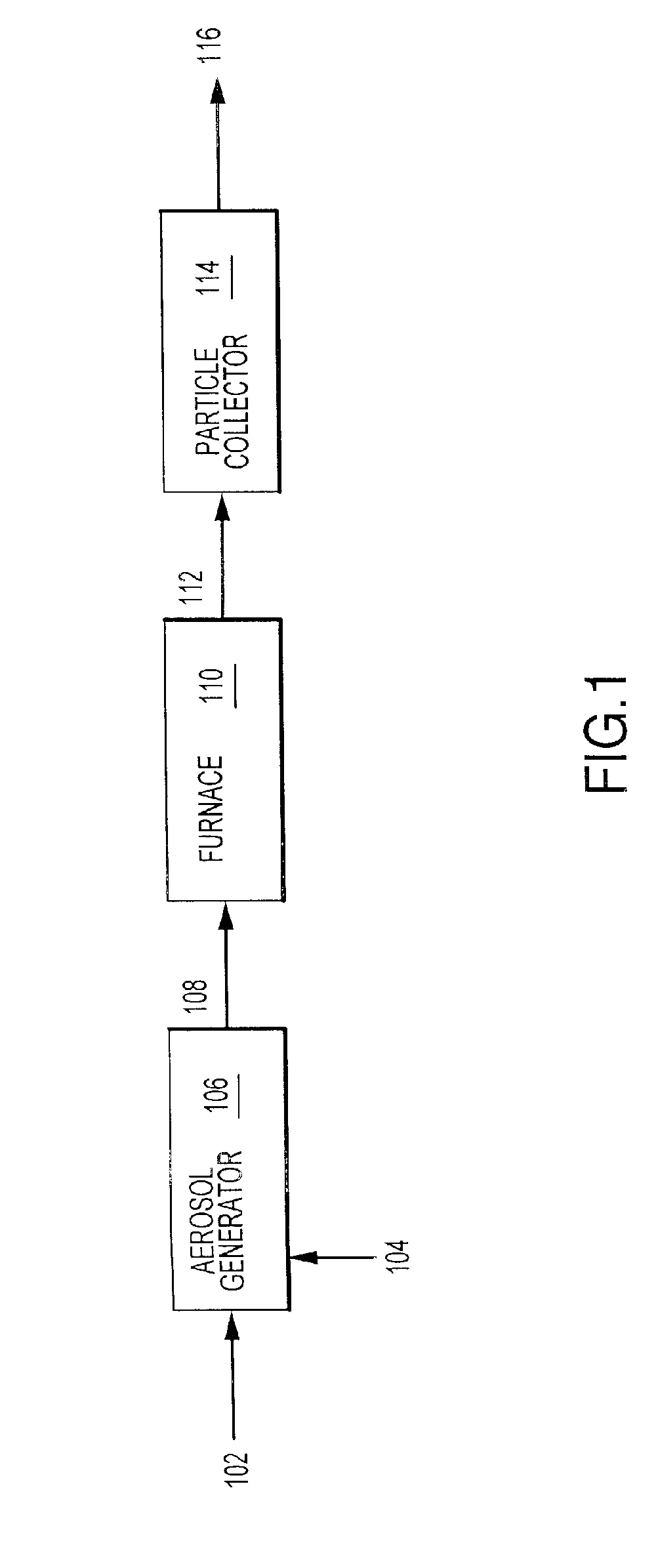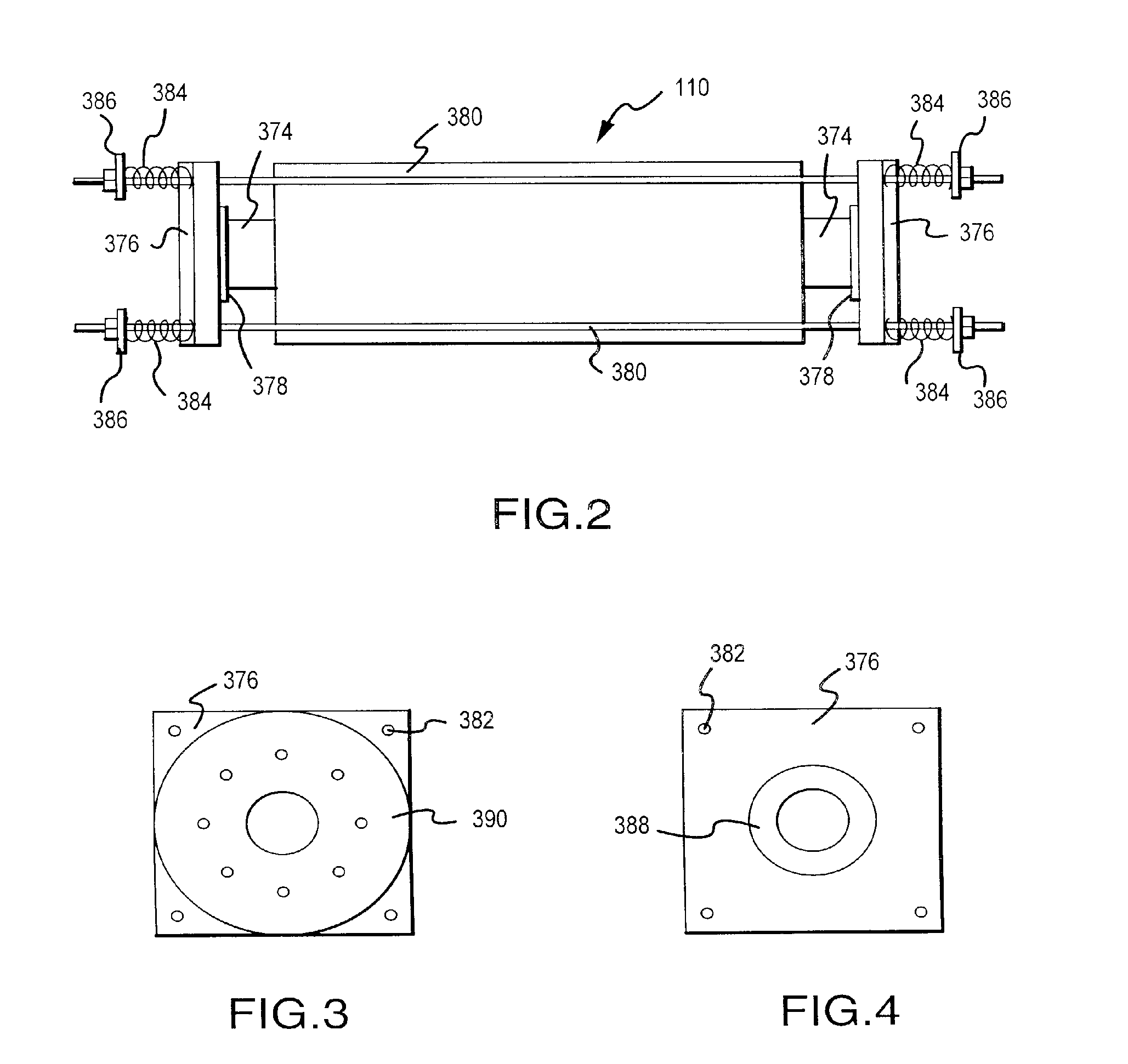Aerosol method and apparatus, coated particulate products, and electronic devices made therefrom
a technology of coating particulate products and aerosols, which is applied in the direction of chemical/physical/physical-chemical stationary reactors, fixed capacitors, chemical/physical/physical-chemical processes, etc., can solve the problems of unsuitable commercial particle production, uncontrollable liquid precipitation techniques, and contaminated particles prepared by liquid precipitation routes. , to achieve the effect of reducing delamination and other failures, improving compatibility, and improving the compatibility
- Summary
- Abstract
- Description
- Claims
- Application Information
AI Technical Summary
Benefits of technology
Problems solved by technology
Method used
Image
Examples
example 1
[0268] This example demonstrates preparation of multi-phase particles of either neodymium titanate or barium titanate with various metals.
[0269] A titanate precursor solution is prepared for each of barium titanate and neodymium titanate. The barium titanate precursor solution is prepared by dissolving barium nitrate in water and then, with rapid stirring, adding titanium tetraisopropoxide. A fine precipitate is formed. Sufficient nitric acid is added to completely dissolve the precipitate. Precursor solutions of various metals are prepared by dissolving the metal salt in water. The neodymium titanate precursor solution is prepared in the same way except using neodymium nitrate.
[0270] The titanate precursor solution and the metal precursor solution are mixed in various relative quantities to obtain the desired relative quantities of titanate and metal components in the final particles. The mixed solutions are aerosolized in an ultrasonic aerosol generator with transducers operated...
example 2
[0272] A variety of materials are made according to the process of the present invention, with some materials being made with and some being made without droplet classification prior to the furnace. Various single phase and multi-phase (or composite) particles are made as well as several coated particles. Tables 3 through 8 tabulate various of these materials and conditions of manufacture.
TABLE 2CompositeMetal Precursor(s)Temperature ° C.Carrier Gas75 / 25 Pd / BaTiO3nitrate1000N2Ag:Pd / BaTiO3(1)nitrate600-1100air75 / 25nitrate1000airAg:Pd / BaTiO375 / 25 Ni / BaTiO3nitrate1200N2 + H275 / 25nitrate1200N2 + H2Ni / Ne2TiO775 / 25 Cu / BaTiO3nitrate1200N2 + H275 / 25 Cu / BaTiO7nitrate1200N2 + H250 / 50 Pt / BaTiO3chloroplatinic acid1100air
(1)70:30 Ag:Pd alloy, BaTiO3 varied from 5 to 90 weight percent of the composite.
(2)30:70 Ag:Pd alloy.
[0273]
TABLE 3PhosphorsCar-ReactorrierMaterialPrecursor(4)Temp ° C.GasY2O3:EuYttrium nitrate, chloride or ace-500-1100Airdopanttate and europium nitrate(1)(2)CaTiO3Titanium t...
PUM
| Property | Measurement | Unit |
|---|---|---|
| weight average particle size | aaaaa | aaaaa |
| weight percent | aaaaa | aaaaa |
| thickness | aaaaa | aaaaa |
Abstract
Description
Claims
Application Information
 Login to View More
Login to View More - R&D
- Intellectual Property
- Life Sciences
- Materials
- Tech Scout
- Unparalleled Data Quality
- Higher Quality Content
- 60% Fewer Hallucinations
Browse by: Latest US Patents, China's latest patents, Technical Efficacy Thesaurus, Application Domain, Technology Topic, Popular Technical Reports.
© 2025 PatSnap. All rights reserved.Legal|Privacy policy|Modern Slavery Act Transparency Statement|Sitemap|About US| Contact US: help@patsnap.com



